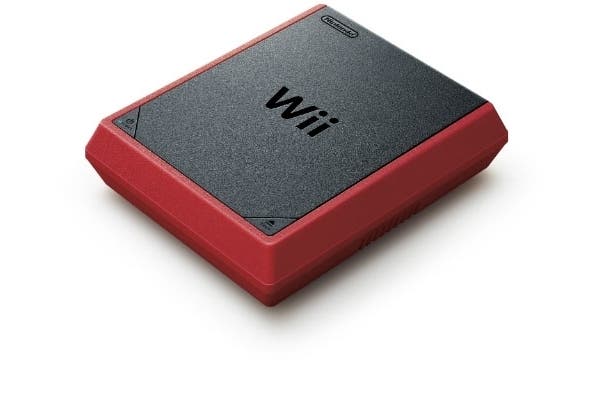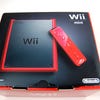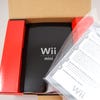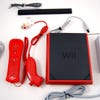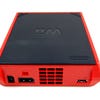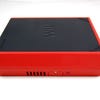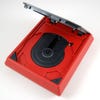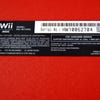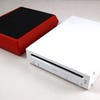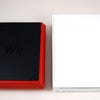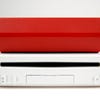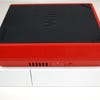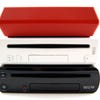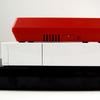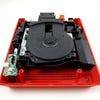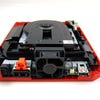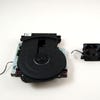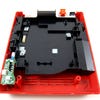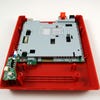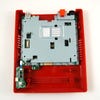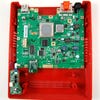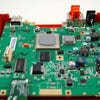Nintendo Wii Mini review
Digital Foundry tears down the new Wii Mini - in more ways than one.
It's Christmas, a time traditionally associated with joy, happiness and generosity of spirit. Currently available only in Canada, one might consider the Wii Mini something of a festive gift from Nintendo: a complete console package for just $99 CAD - that's around £63 GBP, or just over $100 in US dollars. Unfortunately, behind the attractive price-point we find a hardware proposition that reeks of the kind of spite and mean-spiritedness that Ebeneezer Scrooge would be proud of. This is a savagely compromised version of the original hardware that we can only recommend to the least discerning of gamers.
That said, we can imagine that this is exactly the audience Nintendo has in mind for the new revision of the console. With the console in hand, we find a machine designed with durability in mind: the plastics are rough to the touch with a matte finish that should defy scratching, giving the impression of a brick-like, weighty, child-proof piece of hardware. It's an impression backed up by Nintendo's chosen colour scheme - bright red on charcoal-black - making it look like a younger child's "my first games console".
Bundled in the box is everything you need to get going: the traditional Wii staples such as the sensor bar, power supply, AV cable and a rather spiffing, very Christmassy bright red Wiimote Plus (in matching rubber sleeve) with matching Nunchuk. Aside from the instruction manual, that's your lot, but it's all you need for the vast majority of the titles out there. Support is included for some additional Wii add-ons including the Balance Board, but beyond that, any semi-serious user is going to annoyed and frustrated by the sheer lack of functions and expandability offered by the new hardware.
We already know about the headline omissions of course: the slot-loading DVD drive has been removed in favour of a flip-top effort, while the legacy GameCube ports found on the original Wii hardware are gone, meaning that there's no chance of running vintage games on the new device (even though the optical drive can accommodate them easily enough). We would bemoan the resultant inability to use the brilliant GameCube pad for Virtual Console retro titles, but of course the Wii Mini has no VC or WiiWare support at all, owing to the removal of WiFi hardware. Nintendo presumably rationalised that it would not recoup the hardware cost of the board from eShop sales, so decided to omit it altogether in order to hit that $99 price-point - but it didn't stop there.
"First impressions aren't too bad at all - the unit itself is rather clunky but players get everything they need to get going and the controller looks rather splendid."
We held out hope that we could get access to the internet using Nintendo's own USB-based Ethernet adaptor (a single USB port remains on the new hardware) but astonishingly this does not work at all, meaning that the platform holder hasn't just removed the WiFi hardware, but has also deliberately nerfed any kind of internet access. To confirm that, we also found that all the internet configuration options on the front-end have been completely removed. Aside from killing off access to retro games, downloadable titles and DLC (there's no SD card slot), this also means that online gaming is off the table too, not to mention video streaming. Curiously, the traditional channel-based front-end menu from the existing Wii remains, though we presume that all those empty boxes will never be filled.
Remarkably, the unwarranted cutbacks don't end there. Going back to the GameCube era, Nintendo hardware has supported analogue component output with a 480p progressive scan option. For reasons best known to itself, the platform holder hasn't just removed the 480p functionality but has totally removed any kind of support for the component cable itself. Standard RCA AV inputs are - thankfully - fast becoming a relic of the last decade, if not the last century, but in the here and now, that murky composite picture is the best you're going to get from the Wii Mini.
In our recent article on the low power draw of the Wii U in comparison to the Xbox 360 and PlayStation 3, we noted how Sony's hardware has seen electricity consumption drop from over 200w on the launch model, to around 70w on the latest "Super Slim" revision. This has mostly been achieved via smaller, cooler revisions of the main processors. We decided to conduct similar tests of the Wii, comparing the launch model to the new Mini - for the record, both are NTSC models.
Originally running with 90nm CPU and GPU back in 2006, we have heard unconfirmed reports that Nintendo dropped down to 55nm and then 40nm revisions of the hardware over the following years. However, the launch hardware was pretty efficient in itself - running our North American copy of Metroid Prime 3: Corruption we find a relatively miniscule 18w power draw. Running the same software on the new Mini, we find a significant reduction in power - the same game draws just 13w from the mains. For those interested, the Mini comes with a 12v, 3.7a power supply, just like the original launch model - good news for us as it meant we could utilise our existing PAL PSU to run the imported Canadian hardware.
"Comparisons with the original Wii reveal a revised unit that isn't actually that much smaller than the original. And some might say it's a whole lot uglier."
So what we have here is a crippled version of a six-year-old console that offers the absolute base level of functionality - and nothing more. However, probably the most surprising element of the package is the "mini" form factor of the new console itself. The startling reality is that the new model isn't actually that much smaller than the original model to the point where calling it the "Wii Mini" comes across as something of an exaggeration. It's a little shorter and lighter than our launch unit but it's just as chunky. The reduction in size certainly doesn't make the Mini any more "living room friendly" - the bright red plastics make it stand out much more than the more neutral blacks and whites of existing model's casing.
Suffice to say that this was proving to be one of the most disappointing hardware reviews we'd yet undertaken. The Wii Mini isn't just a bad product, it's a profoundly uninteresting one too, easily crossing our boredom threshold within an hour of the initial unboxing - so we decided to extract some more value from it by taking it apart. Now we'll never claim to possess the teardown skills of the likes of iFixit, but thankfully we didn't need them - a child with a cross-head Phillips screwdriver could take this one apart. The Wii Mini's casing is principally crafted from two plastic pieces - the drive lid assembly and a lower casing that houses the guts of the optical drive and the mainboard. These are held together by just four mini screws, two of them exposed and the remainder lurking under rubber feet.
Inside, we find four layers - the optical drive assembly, a plastic "plate" onto which the drive is screwed, followed by a metal heat-shield, which also hosts a small attempt at heat-sinks. The Wii mini uses so little power that it gives off very little heat, meaning that nothing more is really required - also note that the fan mounted on the rear of the unit is absolutely tiny (and most of the noise generated by the unit comes from the DVD drive). Taking away the final layer of screws allow us to gain access to the final layer - the mainboard - where we find the main CPU and GPU (the larger of the two chips hidden under metallic heat-spreaders) residing under ineffectually large dollops of thermal paste. Ripping the Wii Mini apart and photographing the process was a mildly interesting little exercise, but after that we found we had completely exhausted any and all interest in what is a very poor piece of hardware.
"No internet, GameCube, analogue component or 480p support nerfs the Wii Mini to a degree that makes it an unacceptable proposition to any enthusiast gamer."
Nintendo Wii Mini - the Digital Foundry verdict
Traditionally, slim and light consoles receive a genuinely warm welcome from gamers across the spectrum: new hardware is typically cheaper, sexier, and sometimes even more refined than their more expensive predecessors, and only very rarely is functionality actually removed. There's usually something for everyone from these major console revisions.
Unfortunately, the sad reality is that the Wii Mini disappoints on almost every level. It's not a good-looking piece of kit at all, functionality has been stripped down to the absolute bare-bones, and perhaps worst of all for a product actively being marketed on its dinky form-factor is the fact that it's not actually that much smaller than the original model. What we have left is a console designed for young children, marketed at a price low enough to qualify it as a toy.
That's fair enough in that respect - there is clearly value here - but what truly rankles is Nintendo's bizarre decision to actively sabotage its own product, effectively alienating it from consideration for more discerning gamers. Removing WiFi is one thing, but killing off support for Nintendo's own Ethernet USB adaptor is quite another. Over and above that, purposefully removing 480p and component video functionality comes across as deliberately spiteful.
We never quite bought into Nintendo's announcement that the Wii Mini would be Canadian exclusive - these console revisions aren't cheap and we assume that the platform holder will roll out the new hardware in other territories in due course. But having spent some time with the Mini, it's safe to say that we'd be quite happy if Nintendo never releases it elsewhere. Original Wii hardware is generally quite reliable and we'd recommend a used example of the older model (look for the newer RVL-101 revision) over this cut-down, fuglier revision.
